Moon Monday #134: A whole bunch of lunar exploration updates from around the world!
I’m over the Moon to share that Open Lunar Foundation is continuing to sponsor Moon Monday for one more year! 🌗
Open Lunar is a non-profit organization developing space policies, plans, and partnerships to help ensure that our return to the Moon with humans for eventual long-term habitation is peaceful, cooperative, and sustainable.
Jessy gave me feedback on the very first Moon Monday edition, and the Open Lunar team has been increasingly supportive ever since, and so I’m joyful to have their continued support for this one-of-a-kind newsletter and community resource. :) 🚀
Updates from the European Lunar Symposium
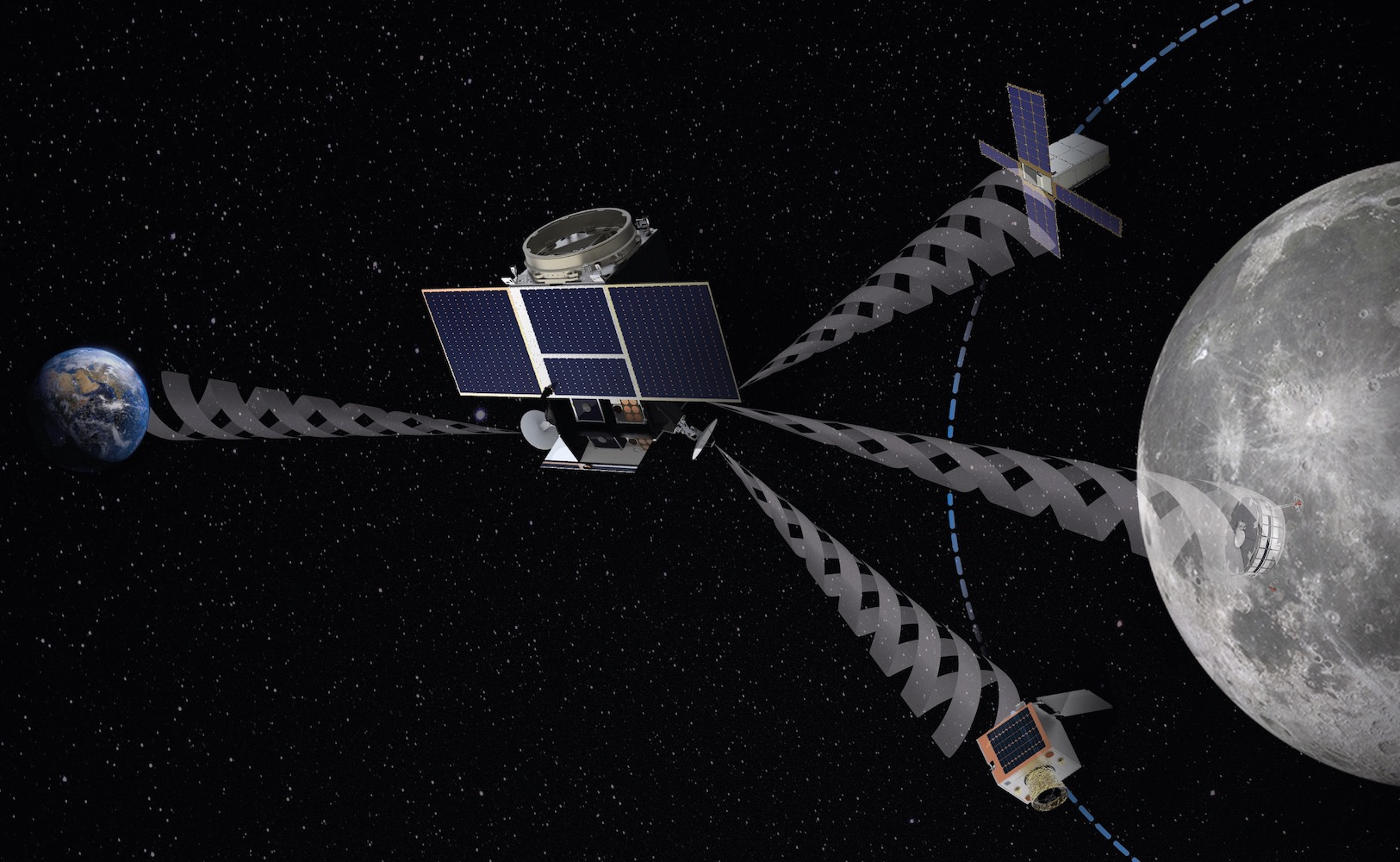
I attended (virtually) the very informative European Lunar Symposium last week, and below are some notable lunar exploration updates from across the sessions I could attend.
Day 1 (link to all talks):
- Simone Pirrotta from the Italian Space Agency said that ArgoMoon, one of the 10 CubeSats launched on Artemis I last year, was deployed by the SLS rocket’s upper stage at a higher tumbling rate than expected. The CubeSat achieved stable attitude only after 15 minutes, meaning it couldn’t capture images of the upper stage pushing the Orion spacecraft out of Earth orbit and onward to the Moon, or help monitor other CubeSats being deployed.
- Sara Al Maeeni from the UAE space agency said that the sub-30 kilogram Rashid 2 rover will launch by 2027 to study water ice and other resources on the Moon’s south pole. The rover will travel to Luna on an as-yet-unselected commercial lander. While on the surface, the rover will also make use of a third party lunar orbiter to enable or enhance communications with Earth.
- UK’s SSTL, maker of the upcoming ESA-backed Lunar Pathfinder orbiter providing communications relay services between lunar hardware and Earth, is partnering with Norway-based KSAT for terrestrial ground station services. KSAT’s several grounds stations are already a growing part of NASA’s Near Space Network, and the company is also establishing a dedicated ground network to provide communications services for the increasing number of Moon missions. SSTL and KSAT are also working on a combined commercial offer for their complementary lunar services. Lunar Pathfinder is targeting a 2026 launch via a commercial Firefly lander part of NASA CLPS program.
- Dan Blumberg of the Israel Space Agency said the orbiter from the upcoming mid-decade Beresheet 2 mission will sport the first hyperspectral camera at the Moon. The orbiter will also host a radiation experiment to test drug stability. The lander will have an Australian experiment to germinate seeds and grow plants on the Moon. SpaceIL, who leads the Beresheet 2 mission, lost several of its key donors two months ago due to the recently worsened socio-economic situation in Israel. SpaceIL is looking for other ways to complete the mission funding.
- The European Union is funding €30 million for the Earth-Moon-Mars project led by the Italian Space Agency to develop a communications node to be deployed on the Moon, at some point. It will work as an enhanced link between Earth’s ground stations and hardware assets on or around the Moon.
Day 3 (link to all talks):
- Each NASA CLPS lander will host a retroreflector as standard, to help us better understand the exact gravitational nature of the Earth-Moon system and the Moon’s interior.
- Intuitive Machines’ NASA-funded Micro-Nova hopper will fly to the Moon’s south pole later this year on the company’s second CLPS lander. Trent Martin from the company said the hopper—which sports two Canadensys cameras to boot—is now enhanced with a neutron spectrometer for subsurface hydrogen detection (as an indirect sign of water ice), a radiometer for surface temperature measurements, and a Nokia 4G antenna. Micro-Nova will perform 5 hops, including one in a permanently shadowed region, and with it help determine geophysical properties of its landing region. Martin added that the Earth-Moon cruise time for the lander itself is just 6 days, after which it will spend only 24 hours in lunar orbit before descending to attempt a safe touchdown.
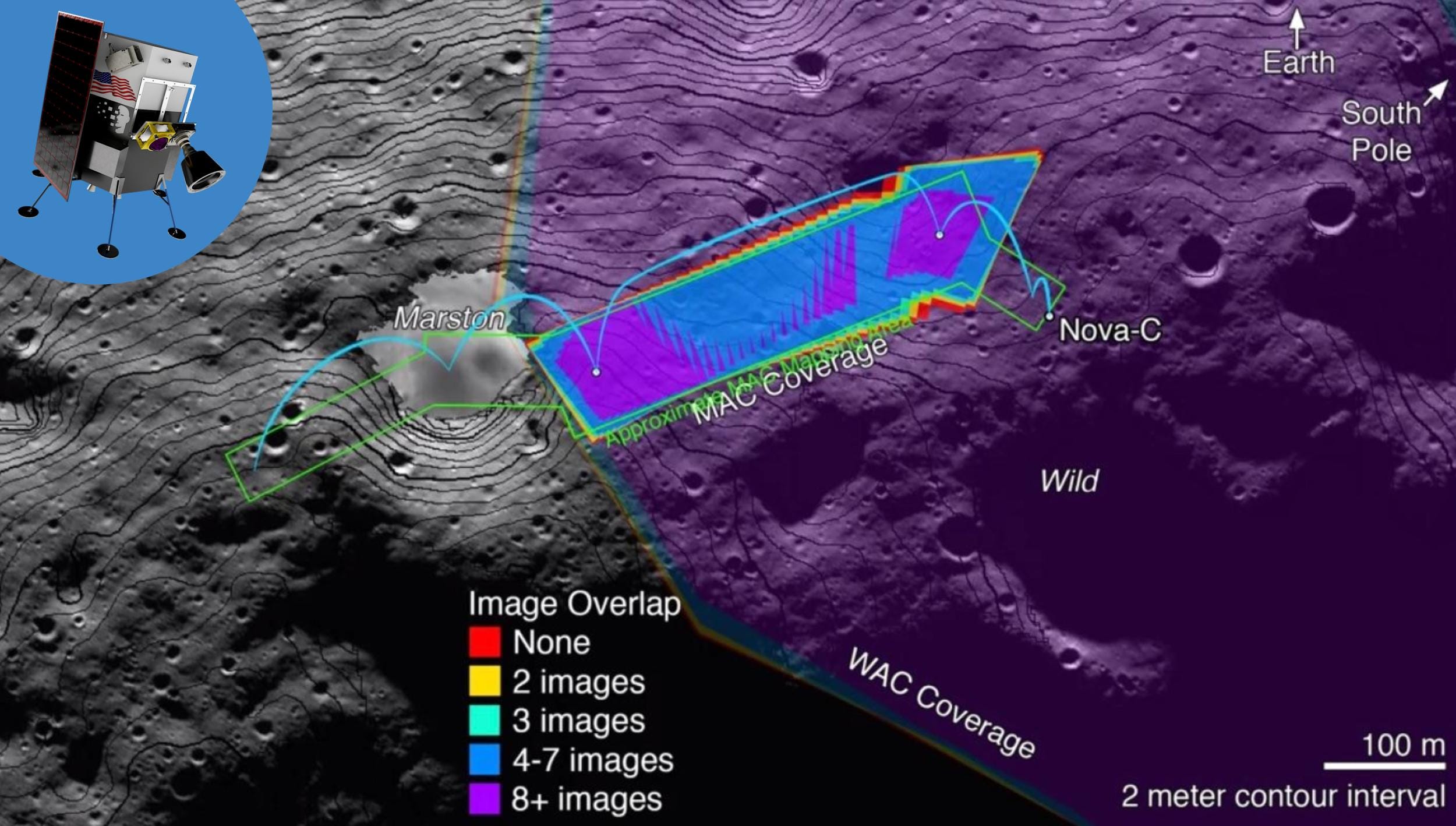
- ESA is continuing to work on its Electronic Field Book, which will aid future Artemis astronauts to dynamically plan Moonwalks as well as detect mineral and chemical composition of lunar rocks and soil in near real-time to help enhance sample collection. The latter detection is possible thanks to improvements in machine learning and an open access mineralogical database of more than 10,000 spectra, both currently employed by the Electronic Field Book for ESA’s Pangaea campaign training future lunar astronauts in geology.
I gave a talk at the European Lunar Symposium about how despite the emergence of private and commercial Moon missions, there’s no alternative to public buy-in, funding, and outreach to sustain lunar exploration globally and reap its immense benefits to science and technological progress.
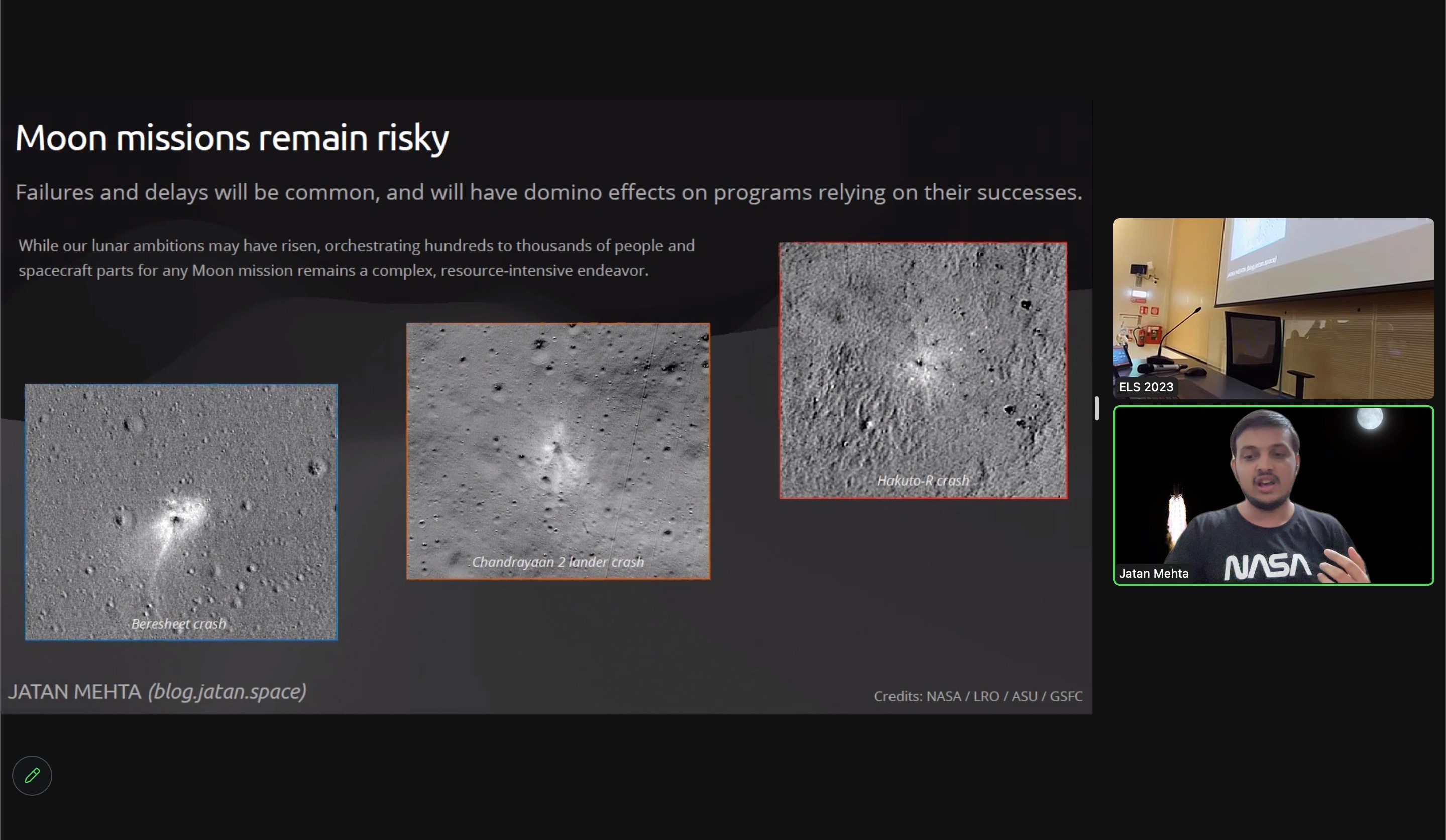
Many thanks to Epsilon3 and Open Lunar Foundation for sponsoring this week’s Moon Monday.
More mission updates
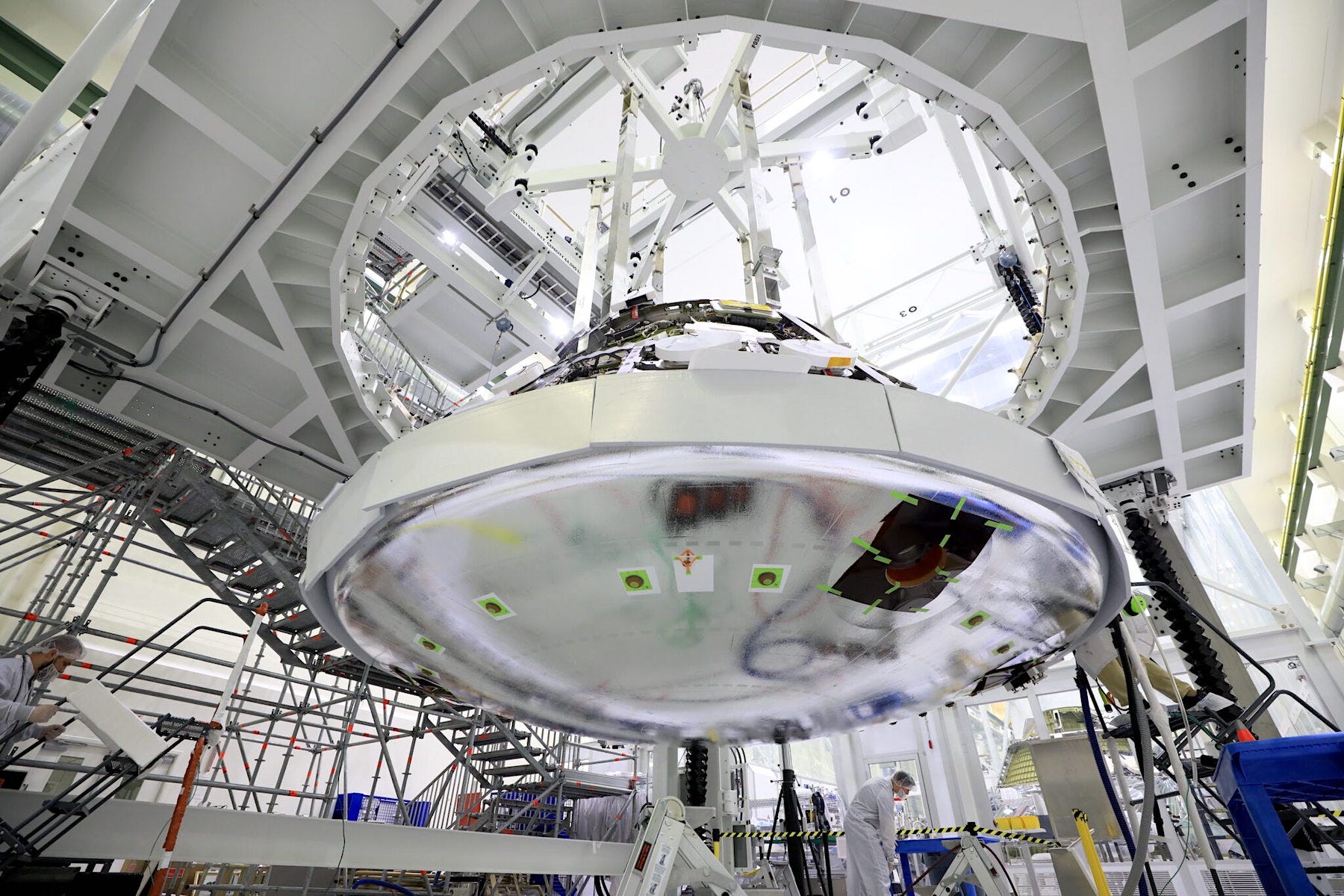
- ISRO has completed assembly of the GSLV Mk III rocket that will launch the Chandrayaan 3 Moon lander, now sitting in its fairing, Soumya Pillai reports. The targeted launch window continues to be July 12–19.
- Hardware progress continues for NASA’s Artemis II mission to fly four astronauts around our Moon and back circa early 2025. On June 25, NASA completed installing the 5-meter wide heat shield of the next Orion capsule to protect the astronauts during the fiery Earth reentry. Up next for Orion is passing launch survival testing before it can be mated with the 15,000-kilogram European Service Module, which will provide propulsion, water, oxygen, thermal control, and electrical power to Orion throughout its deep space journey.
- South Korea has extended their first lunar orbiter mission, KPLO, from the original one year duration to a total of three years. KPLO’s Falcon 9 launch, deployment, and Moonward push last year was more precise than expected, which has spared it an additional ~30 kilograms of fuel to use in lunar orbit. This is great news, albeit the spacecraft’s aging solar panels and battery will shorten the nominal mission day in 2025 from the current 24 hours to 16. The mission’s lead institute KARI expects a possible battery discharge during a 2025 solar eclipse to bring the mission to an end. KPLO’s four indigenously built instruments have been providing promising preliminary science results, as has NASA’s ultra-sensitive ShadowCam imager onboard with its uniquely impactful observations concerning permanently shadowed regions on the Moon’s poles.
- NASA’s VIPER rover, aiming for a late 2024 CLPS launch, will explore rocky terrain in and around permanently shadowed regions on the Moon’s south pole for over 100 days to unravel the nature of lunar water ice deposits. But if the rover is unable to safely drive drive out of the ramps on Astrobotic’s large Griffin lander after touchdown onto the surface, the landing would’ve essentially been for nothing. That’s why mission engineers recently completed yet another test series with the most realistic rover prototype and lander ramp designs yet. Engineers tested VIPER’s hours-long egress under various scenarios including steep ramps, for if the lander touches down on such terrain, and one ramp being more inclined than the other. The rover, its software, and the mission operators performed well during all tests.
Australian lunar technologies find their way into US missions
As part of the Moon to Mars Demonstrator Grants program, the Australian Space Agency is funding three lunar technology projects:
- $3.4 million to Advanced Navigation for providing US-based Intuitive Machines with a LiDAV navigation sensor for what looks to be slated for the company’s second CLPS mission at the earliest. The aforementioned Micro-Nova hopper on the mission will also use said LiDAV sensor for autonomous navigation.
- $3 million for a ground station for the NASA Artemis Orion capsule’s upcoming high bandwidth optical laser communications terminal.
- $2.4 million to Fleet Space for deploying a miniature seismic station to work for 14 Earth days via the Draper CLPS lander going to the Moon’s farside in 2025. While the lander will host two distinct, NASA-funded lunar-night-surviving seismometers operating for more than four months to help us better understand the Moon’s internal structure and how it evolved, these Fleet-provided instruments will provide complementary data about the Moon’s upper crust.
This move advances Australia’s ongoing strategy to enter the US space industry supply chain with NASA as a key partner and enabler.
More Moon
- The upcoming NASA-funded Lunar Trailblazer orbiter will provide us unprecedented, high-resolution global maps of the amount, distribution, and state of water across our Moon. It will also help us better understand several other key scientific aspects of Luna. Mission intern Filo Merid recently created a nice new infographic summarizing Trailblazer’s scientific goals.
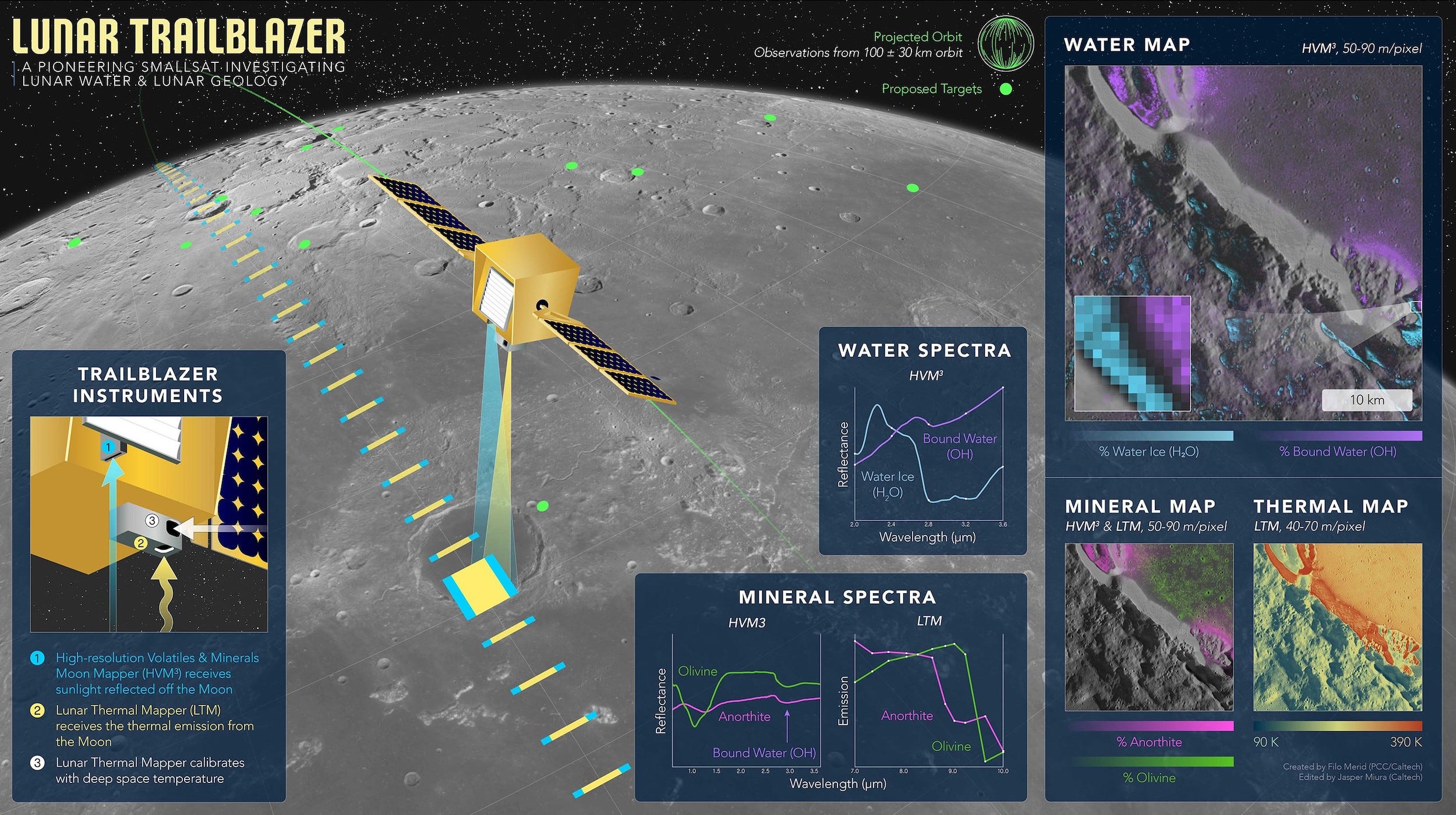
- ESA, CNES, and DLR jointly conducted three parabolic flights in April to mimic lunar gravity and test the ergonomics of an equipment transport carrier whose future version could be used by lunar astronauts, including Artemis ones.
- The hybrid 2023 NASA Exploration Science Forum from July 18–20 will focus on lunar science and related exploration updates on Artemis and related missions as well as on collaboration activities with the NASA’s international partners.
